FRIDAY THE 13th: THE FINAL CHAPTER (1984)
After being announced dead and taken to a morgue, Jason Voorhees spontaneously revives, escapes from the hospital, and stalks a group of friends renting a house in the countryside near Crystal Lake.
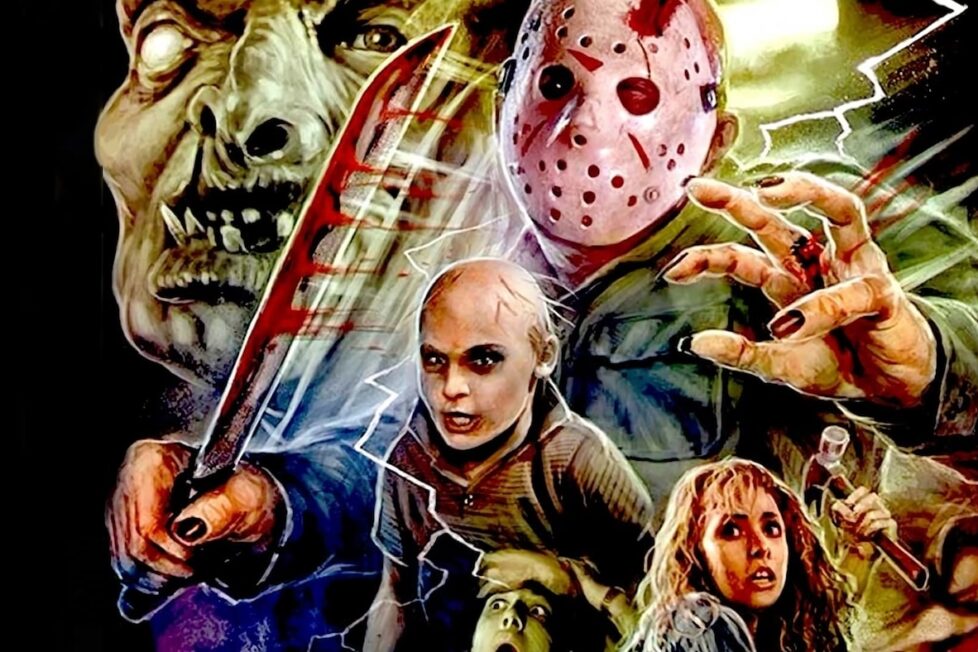
After being announced dead and taken to a morgue, Jason Voorhees spontaneously revives, escapes from the hospital, and stalks a group of friends renting a house in the countryside near Crystal Lake.


Freddy’s Dead. Halloween Ends. But hold on, I recently reviewed Jason Goes to Hell: The Final Friday (1993), which came after this sequel. It seems no horror icon is ever really dead, and none of us truly believe they are. And why would we want them to be? We crave that full stop to retroactively morph into a dot-dot-dot…
Only 21% of film critics, according to Rotten Tomatoes, enjoyed this fourth entry in the Friday the 13th franchise. The rest didn’t recommend seeing the last one, and they certainly wouldn’t want you to see the next one either. But you’re reading a retrospective of a 40-year-old slasher sequel, so I know you adore it already…
However, this critical rewatch of Friday the 13th: The Final Chapter surprisingly didn’t rank amongst the best, unlike its position within the fandom. If I weren’t aware of the gloriously campy delights ahead, I might’ve been happy this ended with a single dot.
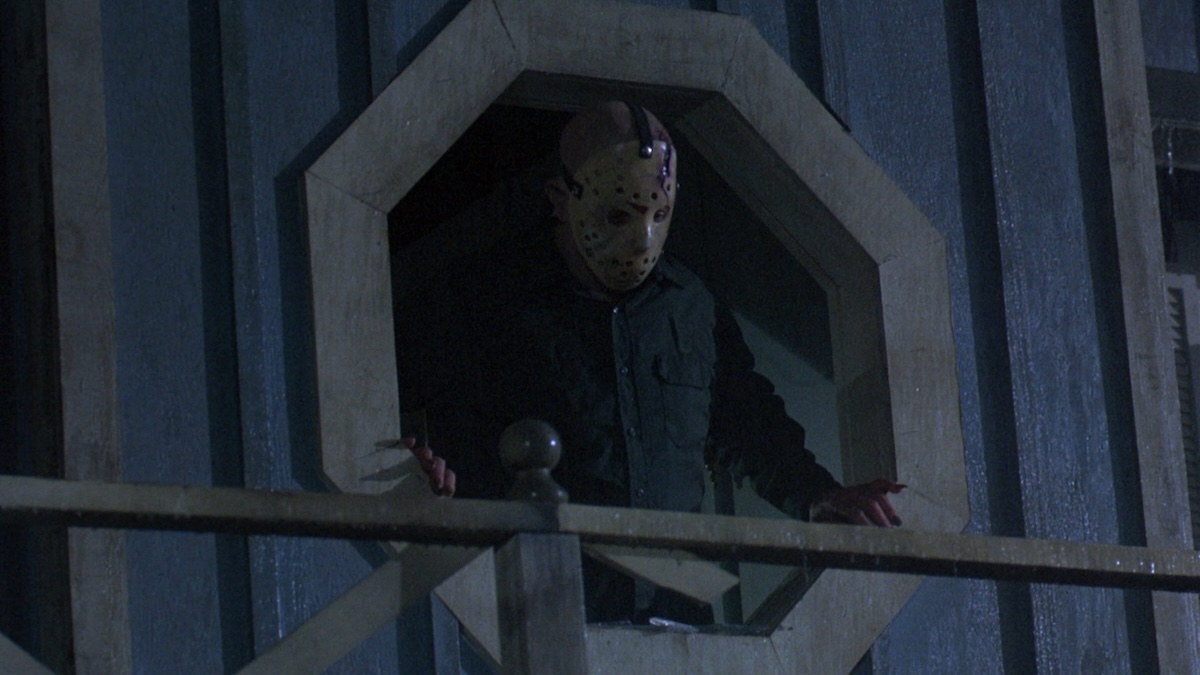
“There was a moment in time where I hated the Friday the 13th movies,” confessed Frank Mancuso Jr., production assistant on Part 2 and producer of Part III. “With the fourth one— which I entitled The Final Chapter for a reason—I really wanted it to be done and walk away.”
The third chapter was intended to be their finale, but preoccupied with promoting the 3D gimmick, they forgot to emphasise this finality. Paramount Pictures thought the slasher genre was burning brightly but dying out, makeup legend Tom Savini returned to kill off Jason Voorhees in true gory fashion, and Mancuso Jr. was adamant about producing this as the last ever Friday the 13th.
Drowned, stabbed, hacked, hanged, and axed to the head: Jason is dead… tired of these damn horny teenagers in his camp. A short stint in the morgue and he’s back to find a new bunch of partying youths camped opposite the new Jarvis family, and someone harbouring a grudge. There’s not much to it. If you’re following along chronologically, this Friday the 13th takes place on Wednesday the 18th.
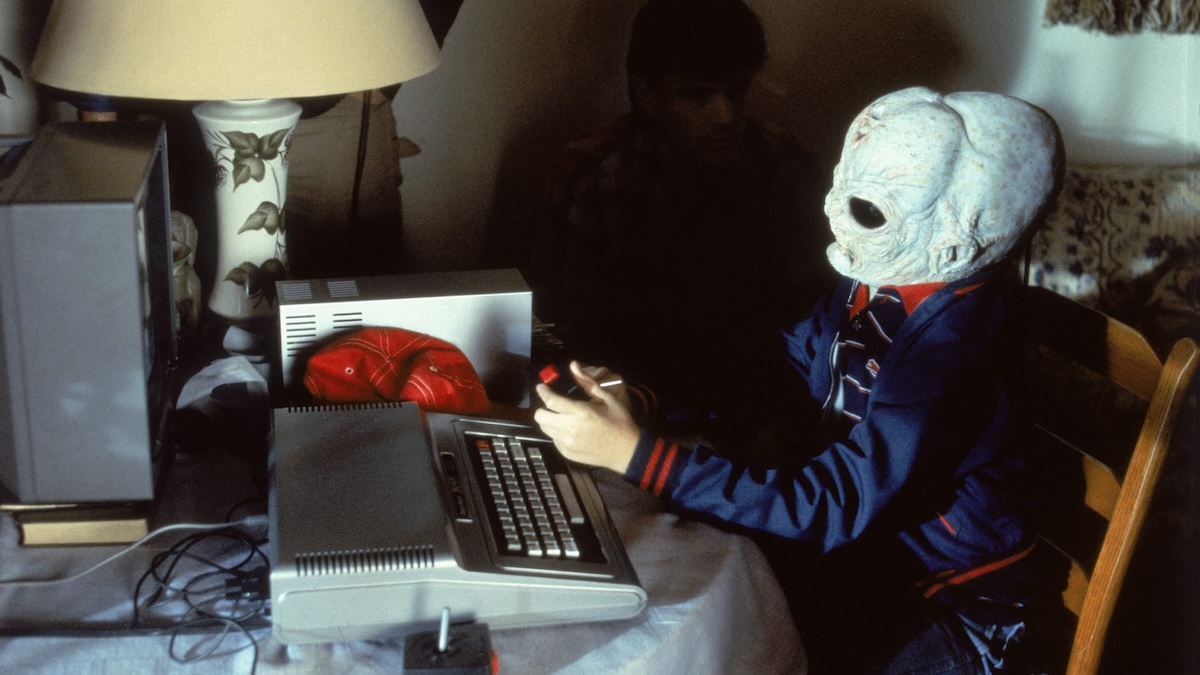
As was the case with most of these sequels, there were some fresh faces off-camera to keep things lively. Joseph Zito found such success with The Prowler (1981) that investor Phil Scuderi called him with an open offer to direct the next Friday the 13th whenever they planned to make it. Contracted to direct and write, despite his objections to writing the script, Zito used the extra money to hire Barney Cohen to do it for him. This resulted in a chaotic writing process as Scuderi insisted on prompt nightly calls with Zito in which the details were then passed to Cohen to form into pages to deliver back over the phone the next night. Cohen still received a writing credit for the film, though it might have pissed off the Writers Guild of America.
“Joe said to me, ‘Don’t try to think of any new ways to kill kids, ’cause people have seen everything. Just make them real and whatever we do to them will be horrific.’ And Joe was right on the money there. Part 3 was a trick movie—they killed all these kids that were better off dead anyway. So we strove to make loveable, real-world teens.”
—Barney Cohen
Past Friday retrospectives have called their casts “fun and believable” and “likeable and sympathetic,” with the obligatory point that the dialogue is always serviceable enough until the killings begin. It might upset the fanatics, and perhaps even Cohen, to call this ensemble downright forgettable. Part V: A New Beginning boasts a better cast. Now they’re pissed. Granted, there are the twins (Camilla and Carey More), the deliberately dull Final Girl red herring (Barbara Howard), and even Crispin Glover. But these are casting choices, not characters.
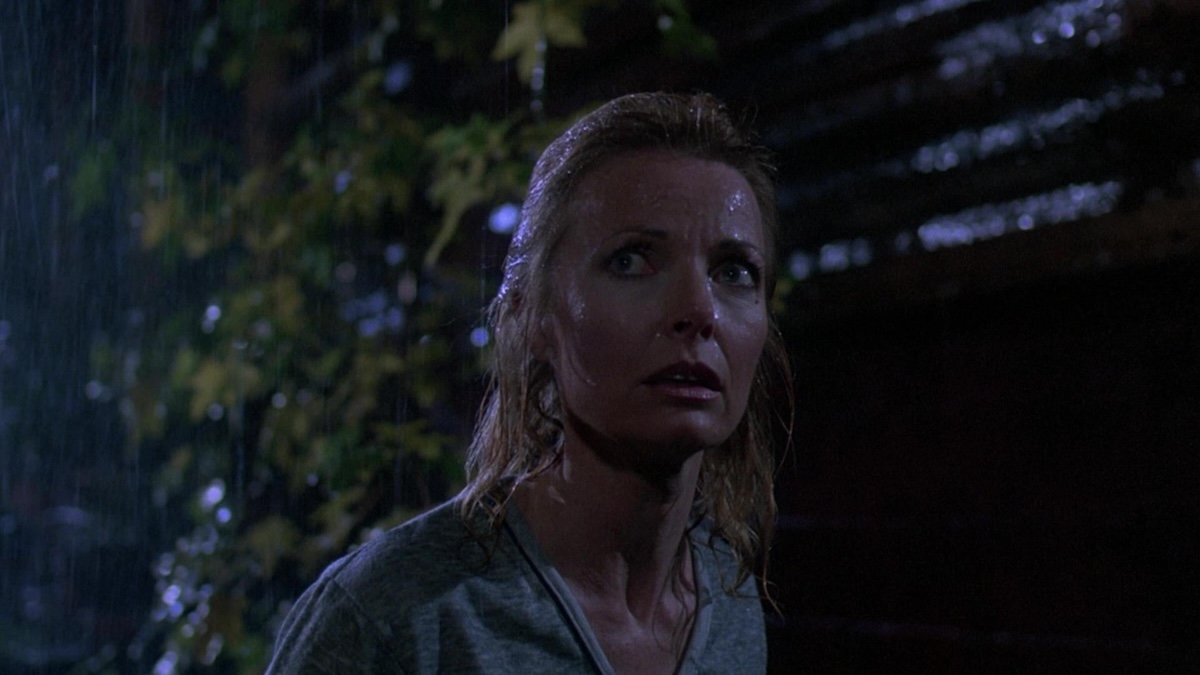
Baulking at the above quote, I couldn’t tell you a thing about these people because they all share the same voice. Hell, they only talk about one thing and one thing only: sex. That’s not an exaggeration of the classic slasher trope; for the first hour of The Final Chapter, every single scene revolves around the boys and girls expressing how excited and/or nervous they are about doing the deed. The kids in American Pie (1999) were less fixated on the subject. Slow dancing, skinny-dipping, showers, even a silent black-and-white film reel has tits in it.
Every Friday is driven by raging hormones, but the dialogue here is tiresome. Jimmy (Glover) and Ted (Lawrence Monoson) have more screen time than any of the actual leads. Jimmy is endlessly chastised for being a “dead fuck.” They repeat this insult six or seven times, yet Jim scores with absolutely no difficulty. Why establish a subplot about him being bad in bed if he turns out to be fine? Who cares, anyone who has sex is immediately dead. This film opens with a montage of the previous three films, even including the campfire legend of Jason from Part 2. However, in Part IV, none of these characters even know who Jason is!
The real protagonists are the Jarvis family, a deliberate twist on the formula: divorced mother Mrs Jarvis (Joan Freeman), teenage daughter Trish (Kimberly Beck), and pre-teen monster nerd Tommy (Corey Feldman). Outside of Glover, Feldman might be the most recognisable star, and this was the beginning of his big-screen success with Gremlins (1984), The Goonies (1985), and Stand By Me (1986) soon after. This two-household cast is very similar to the derided Part VII, which makes the popularity of this entry odd, considering the minimal interaction between the groups. Unlike Sheltered Tina, who snuck out to socialise with her peers, here the closest we get is Tommy voyeuristically watching someone undress through his window. Each Friday film has played with who the last survivor might be, usually focusing on them more than others in the first act. The entire teenage household being expendable completely throws you off balance. Trish only becomes the Final Girl by default.
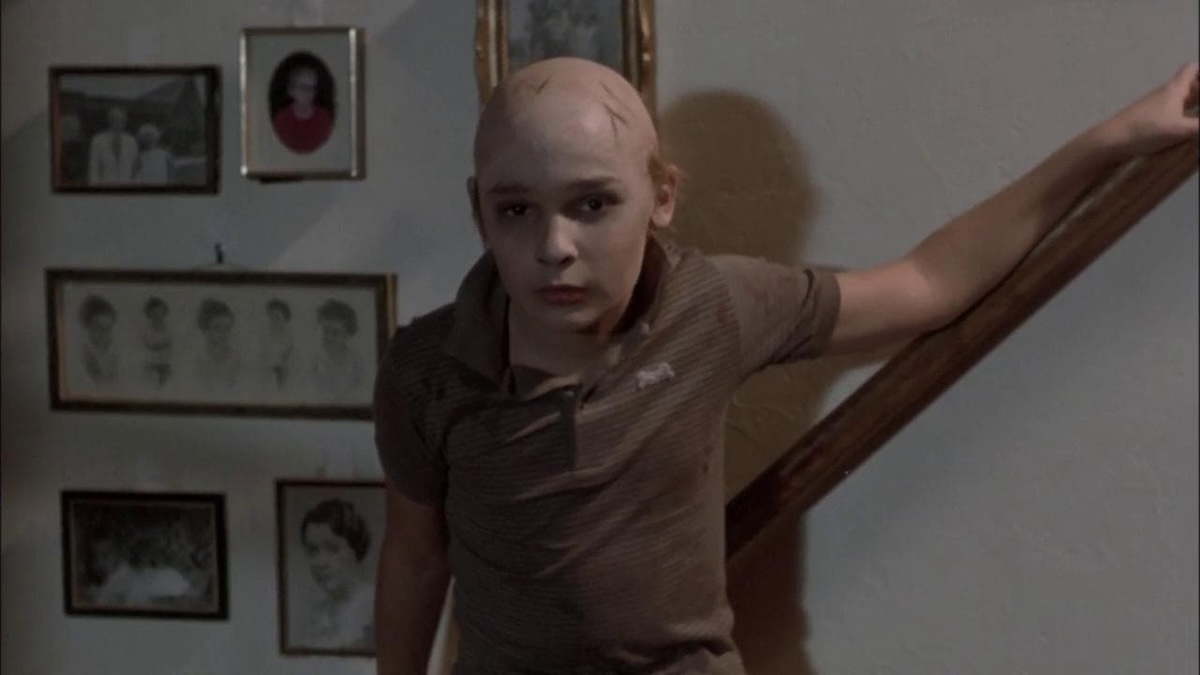
One character whose presence is conspicuously absent is Pamela Voorhees. Her headstone is shown briefly, but Friday the 13th: The Final Chapter is the first entry where Jason truly goes solo without the overbearing spectre of his mother. Ironically, Psycho (1960) would receive two criminally underrated sequels around this time in 1982 and 1986, in which actor/director Anthony Perkins would evolve the Norman and Norma dynamic. Part 2 and III involved Pamela’s head in some way, but strangely Jason seems to be over it now, which makes his actions feel far more mechanical and obligatory.
The thematic deficiency is clear as the Friday formula hasn’t felt this lackadaisical since the first film. The opening stretch is a quarter-hour wait for Jason’s inevitable revival at the hospital, where even the orderlies start getting hot and heavy next to the cold bodies. The suspense is half-decent, and I agree with Zito’s thought process that he “wanted people in the theatre to start shouting, telling him to get up, trying to bring him to life. In essence, making the audience co-conspirators with the filmmakers.” The pacing issue after that is that more time is spent establishing the horny coroner as our first lead than the actual Jarvis family, who are abruptly cut to after the first deaths.
Time spent with Rob (Erich Anderson), the solitary hiker on the hunt for ‘bears’, is better employed. His subplot reveals his grief over his deceased sister, who was impaled in bed with her lover in Part 2. This nod to continuity is reassuring, suggesting the writers consider these films as a cohesive narrative. Rob’s pursuit of vengeance offers a fresh motive, something lacking in these protagonists.
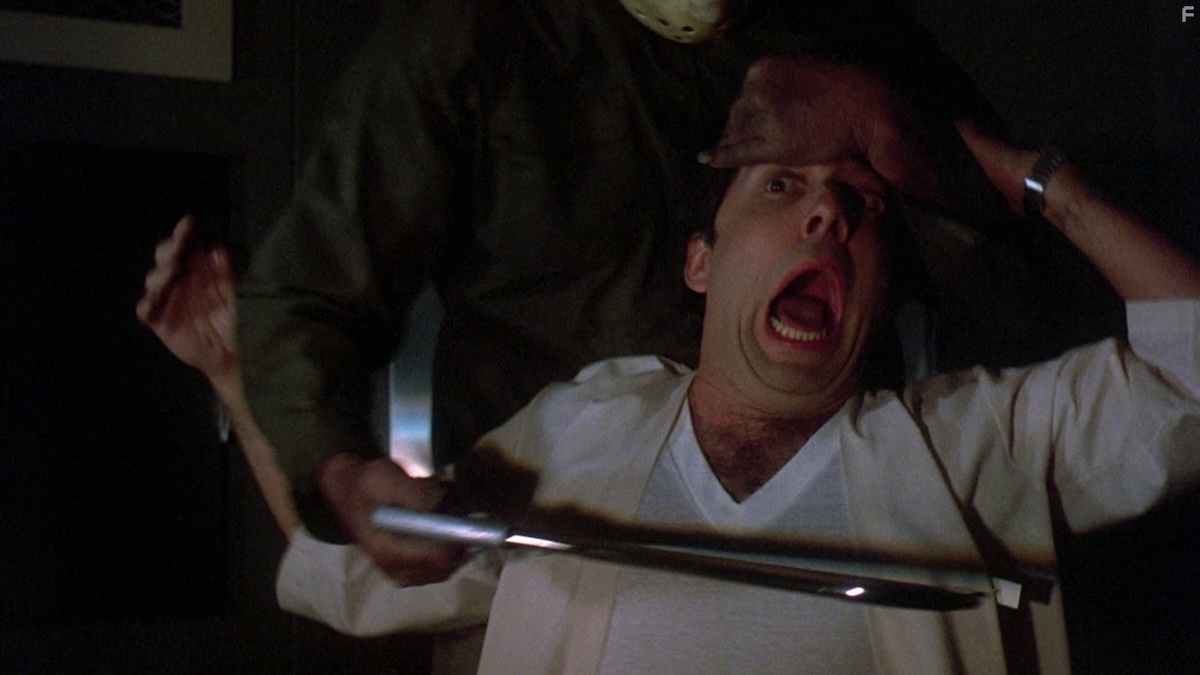
We can overlook the dialogue implying her death was a long time ago when technically it only happened recently. We can also overlook the fact that Rob seems to be the only one aware of the two separate massacres that occurred in these woods this week. However, it’s worth noting that Rob mentions Jason’s body disappeared this morning along with two orderlies. Where are the police?
There’s still the obligatory interlude of the last survivors, oblivious to the second act’s killing spree, wandering around in the dark yelping at the bodies. But then the last twenty minutes are always an exciting treat. Stuntman Ted White dons the hockey mask this time around, demolishing doors and taking TVs to the head. All the more impressive considering he was 55 and used to doubling for Rock Hudson and John Wayne 20-odd years prior. Considered a “real cowboy” by all, White was a blunt professional who considered Jason “really was not a role. If it wasn’t for the money, I never would have done the show.” He didn’t get to ‘act’, but he stood by his fellow actors when Judie Aronson endured a horrendous shooting experience during her death scene in the lake.
WHITE: “We’d gone through four or five takes. Judie said, ‘Please, can I get out of the water?’ And Joe said, ‘No, we’ll be with you in just a few minutes.’ And she said, ‘Please, I’m freezing to death’ Finally, I said, ‘That does it. Get the girl outta the damn water right now, or I walk. I’m not gonna put up with this bullshit any longer. She’s an 18-year-old kid and she’s dying in that water, and you’re telling her no?’ Well, they got her out.”
ZITO: “Here’s the real story. The toughest thing for Ted to do was stay in the water; he wanted to come out. Judie was cold, but she was fine. That’s a pisser. Ask Judie about that.”
ARONSON: “No, that’s not true. I cried. I tried not to. I was a little bit delirious. I was out of my mind. They would not let me stop, that I remember. It was just way too long to be outside in the water. I should have gone to the hospital, but I didn’t. I was sick like a dog after that.”
ZITO: “I’m not trying to protect the story or deny it. I don’t remember having a single conversation with the guy.”
WHITE: “I kept telling Joe, ‘You just wait, when this movie is over, I’m gonna kick your ass.’ And when he yelled cut for the last time, he actually ran to the car just to get away from me.”
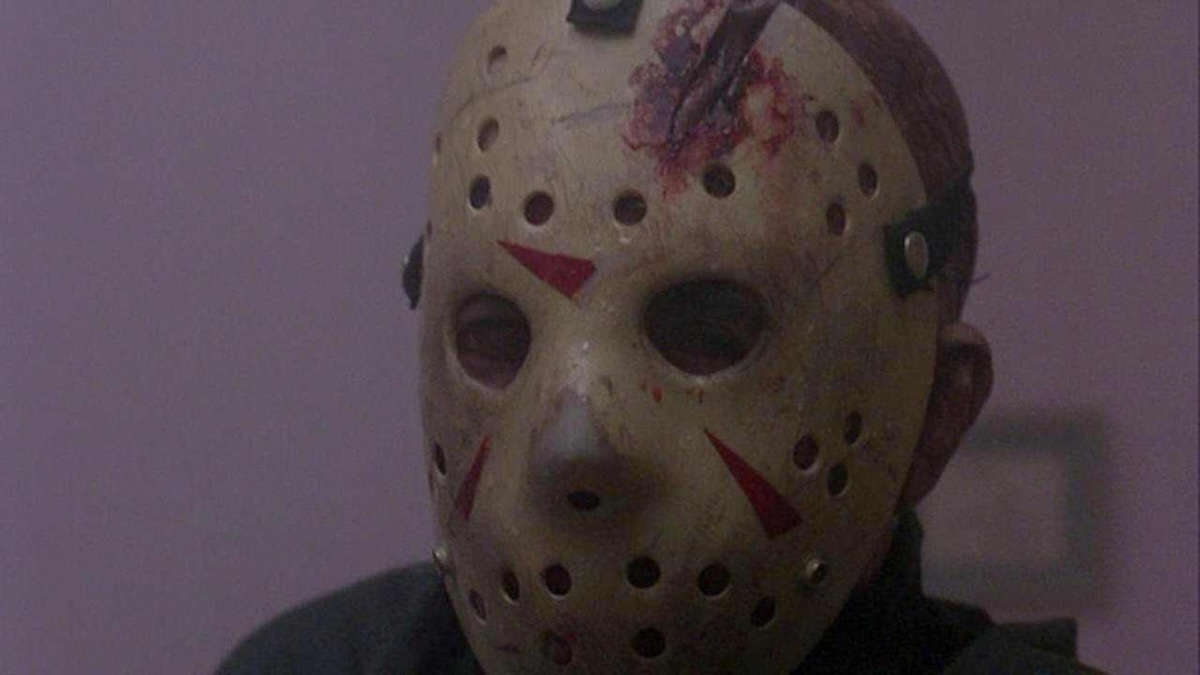
White managed to have some fun frightening another crew member during a particularly shocking scene with Corey Feldman. As Jason lunges through a window to grab Tommy, the child actor remained equally unsuspecting. White paused after his countdown, allowing Feldman to believe the stunt wasn’t happening, which resulted in a very authentic scream. These more cheerful memories (and likely some decent payouts) were enough to turn White’s opinion of the franchise around later in life, as he joined the convention circuit and appeared in three Friday documentaries.
All the best parts aren’t confined to the very end. The second half of Final Chapter contains some of the franchise’s great kills, from Paul (Alan Hayes) being hoisted high over Jason’s head by a harpoon to the crotch, to Jimmy’s corkscrewed hand and cleaved face. Zito and Cohen could rest assured about the carnage as Tom Savini brought his expertise: “I used to have it in my contract that I would actually direct the scenes that my effects are in because that’s my magic trick. I don’t just take over, but I do suggest camera angles, and Joe listened.”
Zito, along with his long-time cinematographer João Fernandes, captures the cosy campsite atmosphere of this series. Yet, he skilfully skirts the usual hazy summertime vibes in favour of an intimate downpour. These aesthetic choices also became logistical nightmares, as dumping constant rain on your cast and crew for weeks was expensive and bothersome. But as far as stories go, Zito was no stranger to being bothersome.
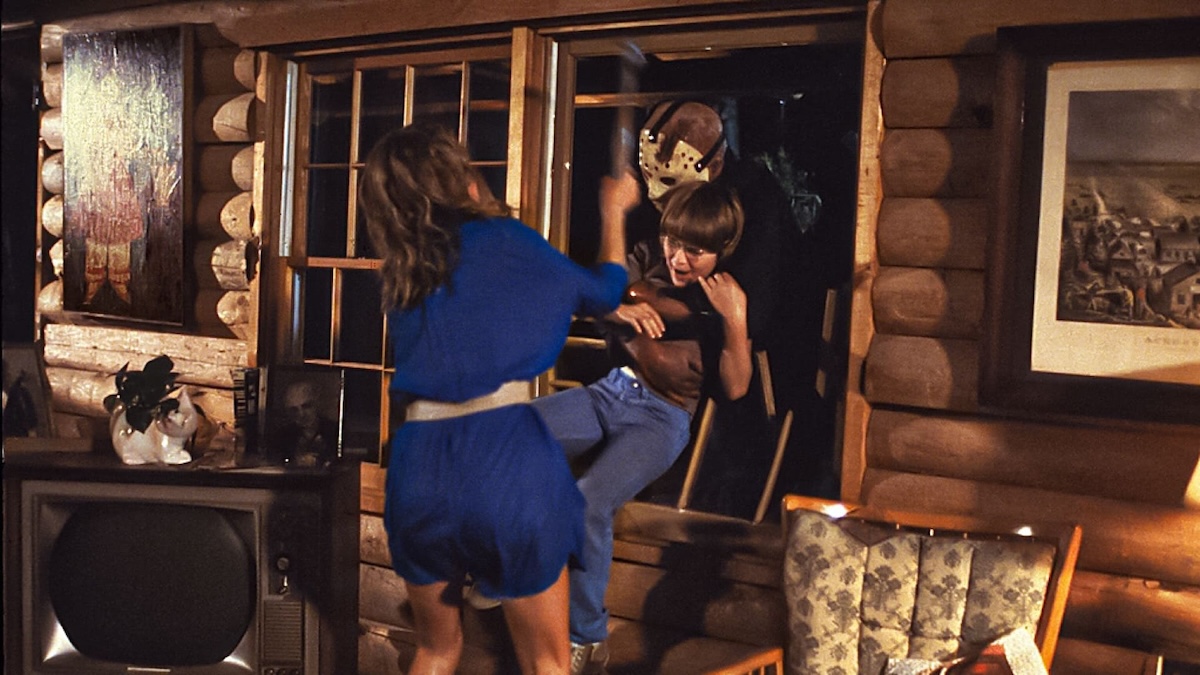
Even after production had wrapped, Zito had one last gift for his editing staff. Paramount had intended to release The Final Chapter in October, but there was an actual Friday the 13th coming up in April. So, the film was coming out six months early… surprise, editors! The studio recognised this insane crunch time and Mancuso Jr. organised a rather unique situation: “Forget where you live—we’re going to rent a house in Malibu for you, and you’re going to move into that house. All your editors and their assistants and their apprentices will move into that house. Food will be brought in for you. You will never leave until the film is ready to be screened.” Scenes were cut, the ending was retooled, the MPAA was battled once again, and Friday the 13th: The Final Chapter was released on Friday the 13th.
Arguing whether it was all worth it feels redundant now. Critics panned it, fans still sing its praises, and Paramount Pictures made $33M on a $2M budget. For Mancuso Jr, he could wash his hands of the franchise and be finished with Jason. His father, Frank Mancuso Sr., Chairman and CEO of Paramount, spoke pragmatically of the franchise’s enduring success. “The responsibility of the chairman is to make the most money for the company,” he said. “I don’t believe, and never did, that there is a bad piece of film if people want to see it.” Some variation of this thought must have crossed Mancuso Jr.’s mind as he stayed on to executive produce the next four sequels until Paramount traded the property to New Line Cinema.
Friday the 13th didn’t end then. Critic Roger Ebert was right when he assured his readers “This isn’t the final chapter, that’s just a marketing gimmick.” A New Beginning arrived less than a year later, and even the fans loathed that one. Why? Jason’s dead, isn’t he? They genuinely killed him off this time. For that audacity, I have to applaud them. It took the wonderfully tongue-in-cheek sixth film to brush off how Jason Lives. Perhaps The Final Chapter simply needed a more direct title, one that would accurately convey the significance this entry has in permanently altering the franchise’s course, rather than suggesting its conclusion. Jason Dies… For Now?
USA | 1984 | 91 MINUTES | 1.85:1 | COLOUR | ENGLISH

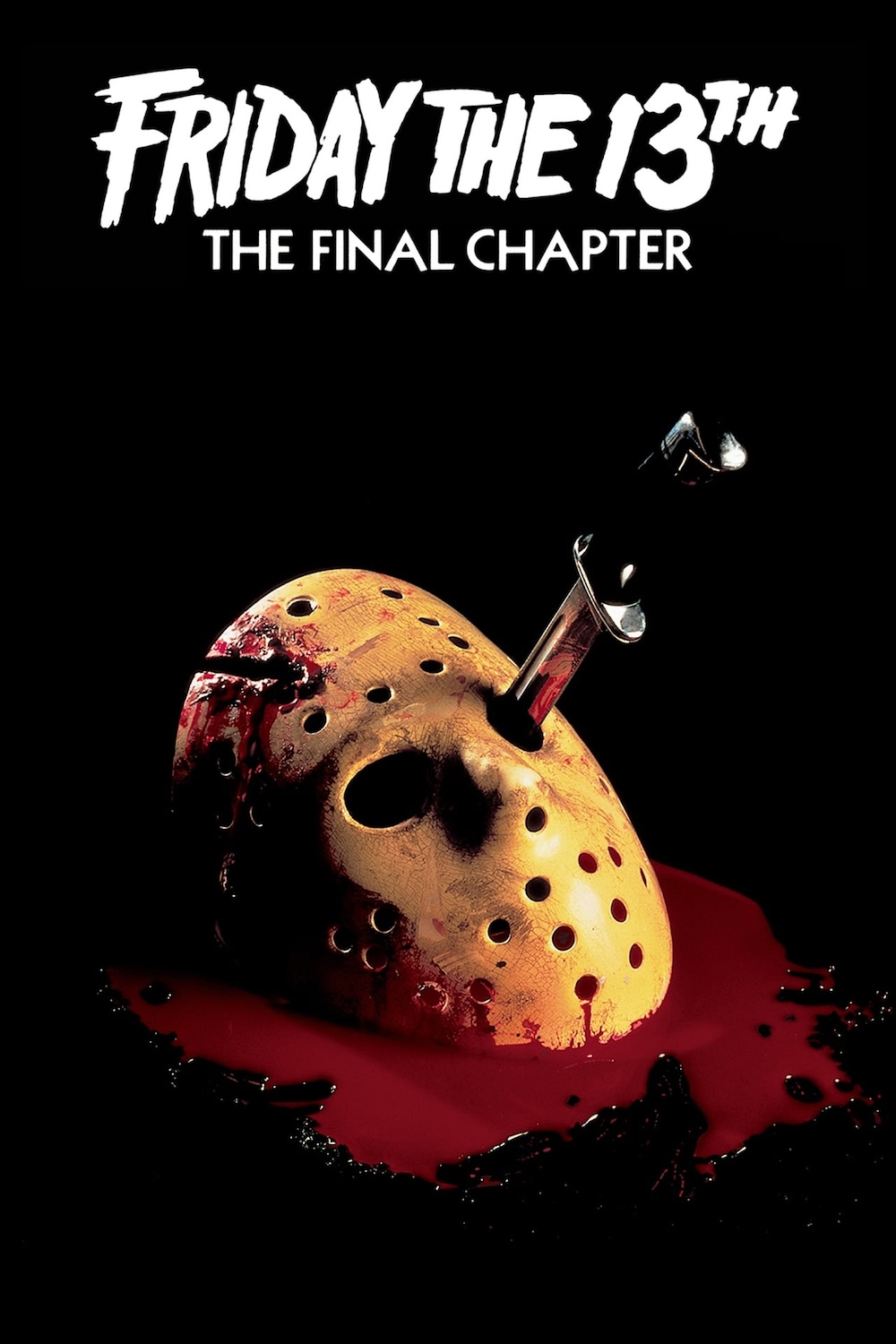
director: Joseph Zito.
writer: Barney Cohen (story by Bruce Hidemi Sakow; based on characters created by Victor Miller, Ron Kurz, Martin Kitrosser & Carol Watson).
starring: Kimberly Beck, Corey Feldman, Peter Barton, Crispin Glover, E. Erich Anderson, Barbara Howard, Alan Hayes, Joan Freeman, Judie Aronson, Camilla and Carey More, Lawrence Monoson, Bruce Mahler, Lisa Freeman & Ted White (uncredited).
